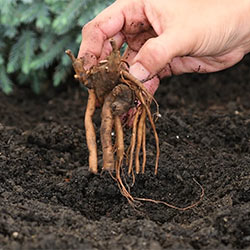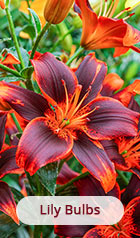
How to Grow and Care for Hibiscus
Hibiscus are well-known for their big, showy flowers reminiscent of the tropics - and they're surprisingly easy to grow. The hardy plants can withstand cold winters to rebloom each summer.
About Hibiscus Plants
The hibiscus plant is thought to have originated from India, where it spread into the Pacific Islands. In its early years, it was heavily cultivated in China, where these tropical flowers quickly grew in popularity. Today the hibiscus plant has many colorful varieties. Learn more about how you can help your hibiscus plant thrive below.
Hibiscus Quick Facts
Most Popular Colors: Common hibiscus flower colors are red, pink and white.
Blooming Season: Hibiscus bloom time typically occurs mid-summer through frost.
Sun Exposure: Your hibiscus plant should receive partial shade to full sun - full sun will encourage better blooming.
Hibiscus Plant Care
Hibiscus flowers are sure to steal the show in any sunny spot in your
garden. Because these plants tend to spread out, give them plenty of space apart from one another. Hibiscus should be planted three to six feet apart from one another.
Hibiscus plants are one of the last perennials to appear in spring -- don't declare your shrubs dead if they don't sprout early - they'll be ready to grow soon! Proper hibiscus flower care includes watering your hibiscus often during the growing season. Keep an eye on your hibiscus plant during the changing of the seasons. Hibiscus flowers need much less water as temperatures drop, but don't allow the ground to dry out between waterings. Prune your hibiscus plant in early spring before new growth appears to maintain its shape.
Hibiscus Pests and Disease Prevention
While proper maintenance and care of your hibiscus plant will help set it up for success, hibiscus are not completely immune to pests and diseases. Read on for some of the common issues and fixes for problems in hibiscus plants.
Thrips
Thrips are harmful insects that invade the bud of the hibiscus flower, where they lay their eggs. Their larvae then eat the contents, making the hibiscus bud drop off. Once the bud drops, the larvae will burrow into the ground, so it is very important that you mitigate this issue quickly. Using a systemic insecticide is the best way to get rid of these pests.
Spider Mites
Spider mites are minuscule pests that will appear on the leaves of your hibiscus plant. Although the mites themselves are very hard to detect, their presence will be apparent from the blotchy appearance of your hibiscus leaves. The good news is that they are fairly easy to get rid of, all you need to do is spray them off with a hose.
Root Rot
Root rot occurs when soil conditions for hibiscus are cold or too wet, allowing bacteria and fungi to develop. If you notice that the leaves of your hibiscus plant are getting darker in color, it may be an indication of root rot. To prevent root rot from occurring, clean away dead foliage from the plant and the ground around it, be sure there is plenty of aeration by trimming overgrown plants, and avoid over-watering your hibiscus. Be sure to check out our
tips for foolproof gardening page for more information on achieving success in your garden!
Have another question? Return to the Customer Service Help page or send an e-mail directly to Customer Service






















